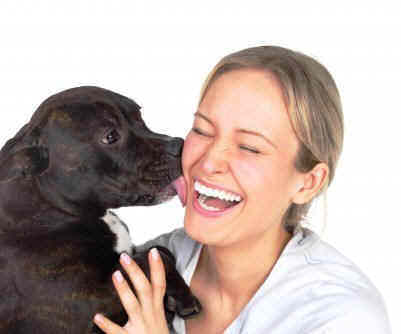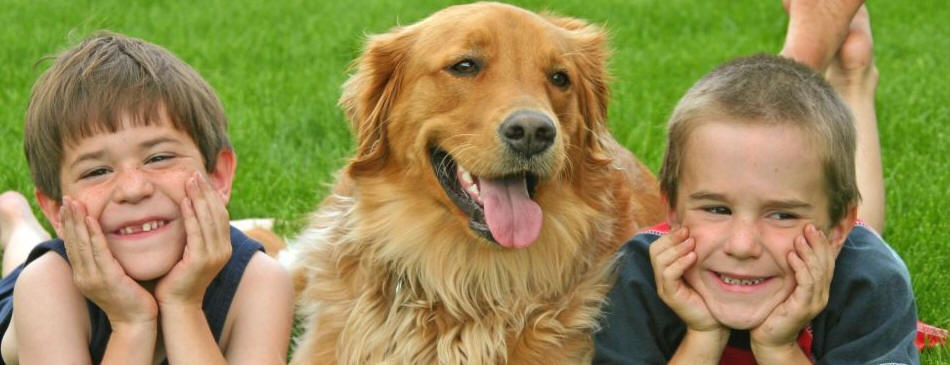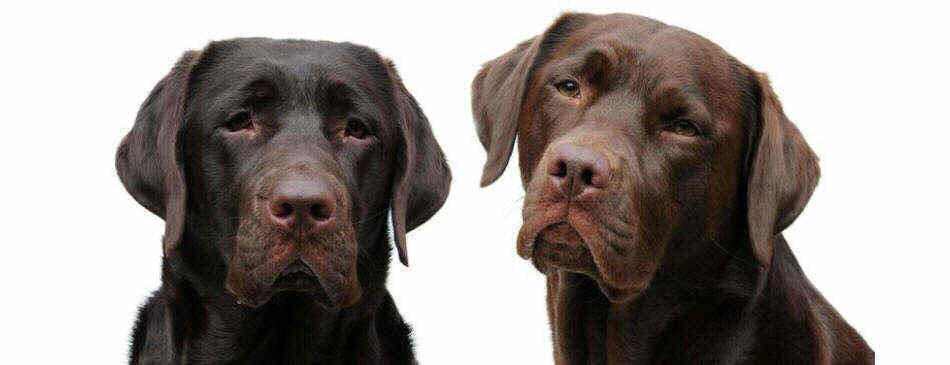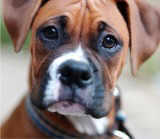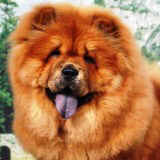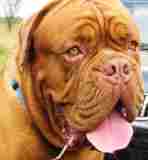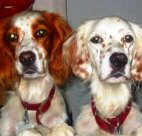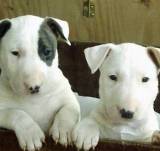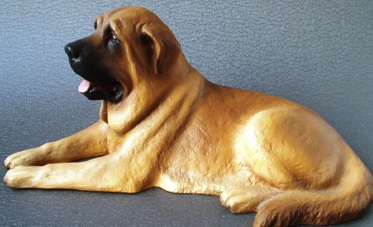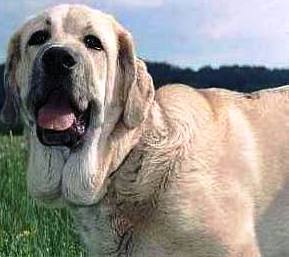|
The Spanish Mastiff, or Mastín Español is a large breed of dog,
originating in Spain, originally bred to be a sheep dog and a guard
dog whose purpose is to defend livestock from wolves and other
predators. The Spanish Mastiff is thought to have descended from
Greek dogs brought to Spain via Greek and Phoenecian maritime
traders starting around 1000 BC. The Greeks used similar dogs in
battle because of their strength. During the conquest of the
Americas, Spanish conquistadors used Spanish Mastiffs and other
Molossers in battle against Native Americans, like the Aztecs or
Mayans. These specially trained dogs were feared by the Indians for
their strength and ferocity. Today, many Spanish Mastiffs are kept
as family companions. Although these dogs are popular at Spanish dog
shows, they are still relatively rare outside the Iberian Peninsula.
The Spanish Mastiff has been named the national dog breed of Spain,
and many dogs of this breed can be found in the country, especially
in the mountains. It's also believed that the Spanish Mastiff played
an important role in the development of other Mastiff breeds such as
the Dogo Argentino, the St. Bernard, and the Asian Shepherd. The
Spanish Mastiff has been recorded in the Foundation Stock Service
since August 2008.
General Appearance
The Spanish Mastiff is a very large and powerful dog, similar in
appearance to the other Mastiff breeds. The Spanish Mastiff is a
stocky, robust, rustic-looking dog. Very large and rather lengthy
with a massive chest and the power of a heavyweight contender. The
Spanish Mastiff is the largest of all the Spanish native dog breeds
and is the heaviest of the LGDs. The body should be rectangular,
well muscled and with strong bone. It has a massive,
well-proportioned head with a deep muzzle, strong jaws, full lips
and a characteristic dewlap on the neck, showing clearly his mastiff
type. The Spanish Mastiff has double dewclaws on it's hind feet, a
characteristic this breed shares with such breeds as the
Great
Pyrenees. The short coat is straight with a dense under-layer and an
almost wooly texture. The skin should be abundant and loose on the
body. Colors include plain yellow, red, black, wolf-grey, and
red-brown, or broken colors or spotted. White should not be too
dominant. The center of the back and the tail have longer hair. The
eyes are small, commonly sporting a relaxed, carefree expression
masking his ever watchful eyes. The ears are pointed and pendent.
The tail is fringed and carried low. Most important are balance and
functional harmony in the dog standing as well on the move. His bark
is raucous, low pitched and deep, very sonorous, audible from a
considerable distance.
Temperament
It is a very intelligent dog, not without beauty, whose expression
manifests both these qualities. Rustic, affectionate, kind and
noble, he is very determined when facing dangerous animals and in
front of strangers, especially when he has the opportunity to defend
and protect farms or cattle. In his behavior, one can see it is a
dog sure of himself, determining his strength because he is aware of
his enormous power. In character and function, the Spanish Mastiff
is a classic LGD or Livestock Guardian Dog and is very similar in
many ways to his cousin; the
Anatolian Shepherd Dog. Please note
that like most LGD breeds, Spanish Mastiffs are in general, quite
independent by nature, not very affectionate dogs in the same way a
Golden Retriever,
Poodle or Boxer (they could care less most of the
time whether they are being petted/cuddled or not and often don't
give much in return of affection) and are rather aloof, even to
their owners. They are also dignified, noble and not overly
demonstrative.
Grooming
Spanish Mastiff breed drools and slobbers and may snore loudly. Brush the
short, dense coat regularly, especially when the dog is shedding.
Keep the ear passages clean.
Health Problems and Life Expectancy
Beware of hip dysplasia, heart problems and Entropion (inversion of
the eye lids). Also pano-ostiosis (growing pains), which occurs when
they are growing puppies. This breed is prone to
bloat. It is wise
to feed the Spanish Mastiff several small meals rather than one big
one. Births are difficult in some Spanish Mastiffs and C-sections
are often needed. Spanish Mastiff have a life expectancy of
10-12 years, although some can live as long as 14 years.
Activity Level
While they still need a daily walk, do not allow the Spanish Mastiff
to over exert them selves, such as, jumping, running and going up
and down stairs, when it is a puppy. The reason is; this is a very
fast growing breed (in a period between 6 and 8 months old, they can
easily put on 100 lb.). It needs to save time and energy to develop
healthy bones, muscles and tendons. When fully mature, this breed
has an average need for exercise.
|
